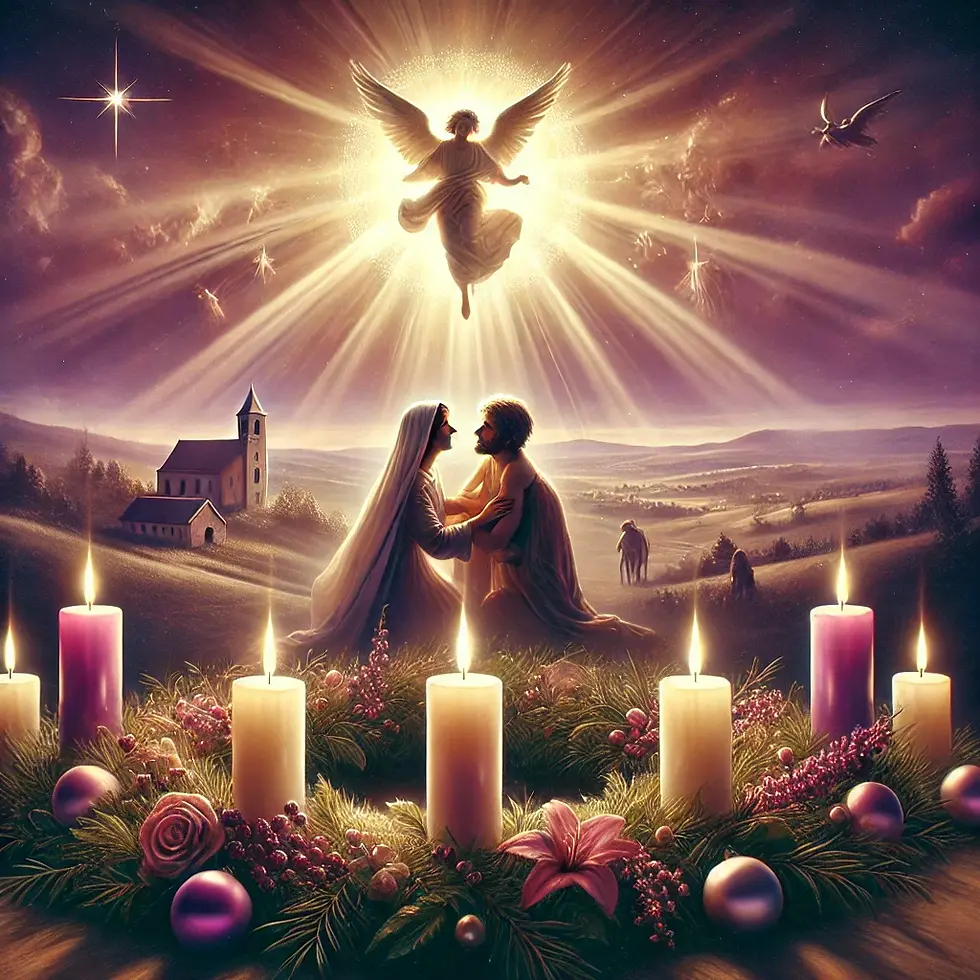All Saints and All Souls Day
- Edward Enriquez
- Oct 30, 2024
- 4 min read

Exploring the Catholic Holy Days of All Saints and All Souls
Every year, Catholics worldwide observe two important feast days that honor the memory of the departed: All Saints Day on November 1 and All Souls Day on November 2. While both days share a common purpose of remembrance, they focus on distinct groups and are celebrated in unique ways. Understanding the origins and traditions of these holy days helps to enrich their meaning and encourages the faithful to connect with the Christian understanding of life, death, and eternal communion.
All Saints Day – November 1
Origins
All Saints Day, also known as the Solemnity of All Saints, traces its origins back to the early Christian tradition of honoring martyrs who died for their faith. By the 7th century, Pope Boniface IV formally dedicated a day to “All Saints,” celebrating it on May 13. Later, Pope Gregory III moved the feast to November 1, marking it as a celebration of not only martyrs but all saints, known and unknown. The day honors the “communion of saints” – the belief in a vast community of holy men and women who have attained heaven.
Purpose and Focus
All Saints Day honors those who have reached eternal glory in heaven. This includes both canonized saints and countless others who led virtuous lives and are believed to be in God’s presence. These saints serve as models of holiness and inspire the faithful to lead lives of grace, compassion, and faith.
Celebrations and Traditions
Catholics around the world celebrate All Saints Day as a Holy Day of Obligation, meaning that attending Mass is required. The Mass often features prayers and readings that focus on the virtues and examples set by the saints, encouraging the faithful to aspire to similar holiness. Some Catholics also light candles or visit graves, remembering those who have lived exemplary lives.
Traditional Prayer for All Saints Day
The following prayer is often recited on All Saints Day, asking for the intercession of the saints in Heaven:
Prayer: “Almighty ever-living God, by whose gift we venerate in one celebration the merits of all the Saints, bestow on us, we pray, through the prayers of so many intercessors, an abundance of the reconciliation with you for which we earnestly long. Through our Lord Jesus Christ, your Son, who lives and reigns with you in the unity of the Holy Spirit, God, for ever and ever. Amen.”
All Souls Day – November 2
Origins
All Souls Day, formally called the Commemoration of All the Faithful Departed, has been celebrated since the early Middle Ages. In the 10th century, Abbot Saint Odilo of Cluny, France, established November 2 as a day to pray for souls in purgatory – the Catholic belief that some souls undergo purification before entering heaven. This day focuses on praying for all deceased believers who have not yet reached heaven but who are on their way.
Purpose and Focus
All Souls Day centers on praying for the souls in purgatory, that they may be cleansed of any remaining imperfections and be united with God in heaven. Catholics believe that prayer, especially the Sacrifice of the Mass, helps to ease the souls’ journey to eternal peace.
Celebrations and Traditions
While not a Holy Day of Obligation, All Souls Day is widely observed with Masses dedicated to the deceased. Many Catholics visit cemeteries to honor their loved ones, often leaving flowers or candles as signs of remembrance and respect. Additionally, special prayers and acts of penance are offered for those who have passed away.
In some cultures, All Souls Day includes vibrant traditions; for example, the Mexican “Día de los Muertos” (Day of the Dead) is a joyful celebration where families gather to celebrate the lives of departed loved ones with food, altars, and decorated graves.
Traditional Prayer for All Souls Day
A common prayer recited on All Souls Day is the Eternal Rest prayer, which asks for God’s mercy on those who have died:
Prayer: “Eternal rest grant unto them, O Lord, and let perpetual light shine upon them. May the souls of the faithful departed, through the mercy of God, rest in peace. Amen.”
Key Differences Between All Saints and All Souls Days
Focus: All Saints Day honors those who have achieved sainthood and are in heaven, while All Souls Day is for those who have died and may still be in purgatory.
Celebration: All Saints Day is a Holy Day of Obligation, with Mass attendance required, whereas All Souls Day is observed but not obligatory.
Intent: All Saints Day inspires the faithful to emulate the saints, while All Souls Day encourages prayer for the deceased.
These two days provide a powerful reminder of the Catholic belief in life after death and the profound connection that endures between the living and the departed. By celebrating these holy days, Catholics come together in faith, honoring those who have gone before them and seeking God’s mercy and love for all souls.





Comments